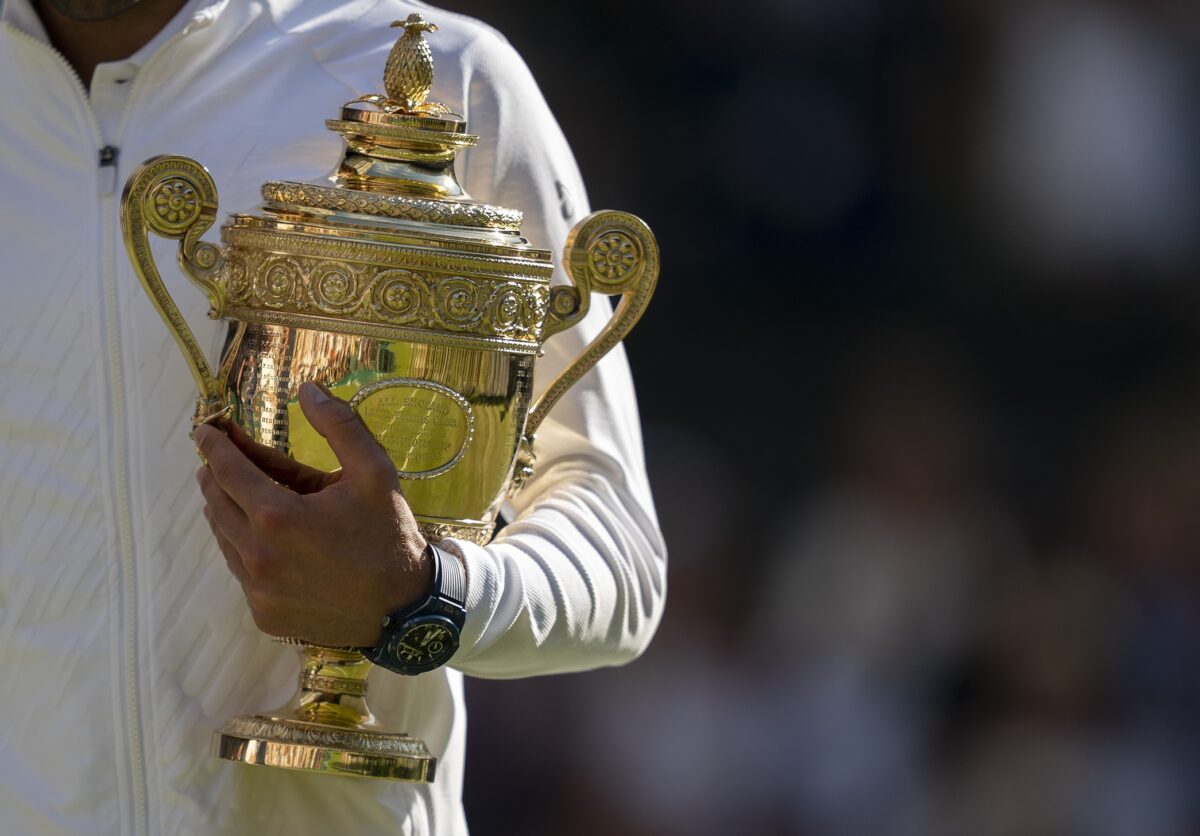More than 100,000 visitors a year flock to the Wimbledon Lawn Tennis Museum to learn about the history of lawn tennis, see racquets and tennis fashions through the years, or even Arthur Ashe’s day planner from 1975–the year he won the Gentlemen’s Singles title. But the most popular artifacts on view are the iconic Wimbledon trophies, perhaps the most coveted awards in sport.
Such is the allure of the Wimbledon trophy that Stan Warwrinka recently purchased his own miniature replica from the Wimbledon gift shop, joking that displaying it alongside the three Major trophies he’s won would complete his career Slam.
The Wimbledon Ladies Singles Trophy
Since 1886, winners of the Ladies Singles at Wimbledon have received the Venus Rosewater Basin. The ornate silver parcel-gilt buffet dish is modeled after one of the most copied artworks of the Renaissance, the Temperance Basin.
Replicas of the Temperance Basin have been created for centuries, and London’s V&A Museum is home to no less than 15 different replicas of the Temperance Basin, representing multiple artistic styles and materials. Such was the popularity of Temperance Basin replicas during Victorian era that, in 1850, Prince Albert gave one to Queen Victoria for her birthday.
The center of the Wimbledon Venus Rosewater Basin, made by the firm of Elkington and Company of Birmingham in 1864, features the goddess Temperance holding a wine goblet aloft and surrounded by the elements of Air, Water, Earth and Fire. Oval panels around the rim depict the classical Liberal Arts–Grammar, Reason, Rhetoric, Music, Arithmetic, Geometry and Astrology–and their patron Minerva.
The names of all the previous Champions between 1884-1957 are engraved on the inside of the dish; those from 1958-2012 spill onto the reverse. Today, a plinth has been added to hold the ongoing list of Champions.
Once a Wimbledon Ladies Singles Champion is crowned, she hoists the dish and circles Centre Court, holding the trophy aloft for spectators to admire. This tradition is essentially the only time the winner has possession of the trophy, as it never leaves the Wimbledon grounds. It is whisked away for the addition of the Champion’s name, and the presentation Venus Rosewater Basin remains at Wimbledon.
The Champion takes home a three-quarters-sized replica of the original. The replicas are miniature works of art themselves, hand-crafted by artisans down to the very last detail, including engravings of all of the prior Champions’ names.
The Wimbledon Gentleman’s Singles Trophy
On the men’s side, the current Gentleman’s Singles trophy (also made by Elkington & Co.), dates to 1884 and made its debut at the All-England Club in 1887.
The most recognizable feature of the silver gilt, urn-shaped trophy is the pineapple that jauntily adorns the very top. There is some debate about why the finial of the trophy is a pineapple, but it was a popular motif in Victorian England, often used as a signal of luxury. The bowl and handles of the trophy feature floral motifs, and it is inscribed with All England Lawn Tennis Club Single Handed Championship of the World. The Champions’ names from 1877 onwards are engraved on the trophy; from 2009 onwards, Champions’ names have been engraved on the trophy’s black plinth.
Before the current pineapple-topped incarnation, the Gentleman’s trophy was the Field Cup, an elegant silver Challenge Cup awarded (for keeps) to any Champion who repeated the feat three years running. British player William Renshaw snagged two Field Cups when he won the singles six years on the trot. Visitors to the Wimbledon Lawn Tennis Museum can see the first Field Cup, engraved with the names of Champions from 1877 to 1883.
Like the Ladies Singles trophy, the Gentleman’s Singles trophy is now a perpetual trophy that never leaves Wimbledon, with a three-quarters replica given to Champions to take home.
Main Photo Credit: Susan Mullane-USA TODAY Sports






